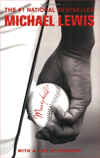| Home | About Us | Resources | Archive | Free Reports | Market Window |
WartsBy
Thursday, December 21, 2006
“What gets me really excited about a guy is when he has warts, and everyone knows he has warts, and the warts just don’t matter.” – Paul DePodesta, the then-assistant general manager of the Oakland Athletics major league baseball team. DePodesta, who went on the serve as the Los Angeles Dodgers GM, wasn’t merely describing baseball. He was discussing the unique art of winning an unfair game... “We don’t get the guys who are perfect,” DePodesta continued. “There has to be something wrong with them for them to get to us.” Paul DePodesta’s fascination with “warts” began at Harvard. As an undergraduate there, DePodesta entered reams of data into a computer to find out what metrics in baseball correlated with winning. What numbers mattered, in other words. Most baseball fans would be surprised by what he discovered. Only two numbers really mattered for hitters: on-base percentage and slugging percentage. Both statistics give runners credit for earning walks, while the more popular batting average does not. As you know, serious baseball fans revel in statistics. But, looking carefully at the numbers, DePodesta found everything else – all the stuff fans pay and overpay for – is meaningless. What turns out to be truly valuable in the game of baseball, the thing that really wins games, is simply avoiding outs. Getting walked or slapping grounders past the infielders. That’s how you win baseball games. No matter what anyone tells you, that’s what the numbers say. Does this sound familiar? What the Oakland Athletics baseball team calls avoiding outs, we refer to as not losing money. For investors, that translates into one boring, slightly screwed up – but incredibly cheap – investment opportunity after another. Stocks with “warts.” You’ll find plenty of “warts” in my newsletter’s portfolio: Companies that own lots of land that just sits there year after year; a stodgy utility company; an out-of-favor steel producer. I buy companies with cloudy near-term outlooks, companies that buy assets in the jungles of Africa, companies that can’t find anything better to do with cash than buy their own shares. That’s what you’ll find in the pages of Extreme Value, month after month. There’s always something wrong with the stocks we buy, the same way the Oakland A’s baseball players seem too slow or too old or too awkward to win. But we’re not buying these “warts” for the novelty. We’re buying because it turns out that, despite the warts, these companies produce more wealth for investors than any other method of investing in common stocks. In both businesses, the bureaucrats and experts are just as willfully ignorant. Several low-budget teams made the playoffs in the 2006 baseball season, and no megabudget teams made it to the World Series... the same way investors who lose money consistently buying expensive hyper-growth stocks don’t notice that the richest investors and most successful fund managers – Warren Buffett, Bill Nygren, Marty Whitman, Bill Ruane, Mario Gabelli – are all disciplined value investors. I don’t buy stocks that are perfect. Perfect stocks are priced for perfection, like Google, which is currently priced as though it’s a sure thing to repeat this year’s record earnings performance – 118 more years in a row. In Extreme Value, we buy the cheapest of the cheap, warts and all, knowing that the low price we’re paying is more important than any problems the company has. The fact that most people see the warts and don’t understand the importance of price gives us a decided edge over other investors. Think about what’s popular in baseball, what really drives the fans wild. Footspeed, base stealing, home-run hitting... all of which Moneyball author Michael Lewis reveals to be highly overvalued by the market for major league baseball players.
Likewise, rapid earnings growth, stock splits, and hot new technologies all send most so-called investors into a buying frenzy. That’s what’s popular among investors, and it’s all dramatically overpriced. So today’s advice is this: Put Moneyball by Michael Lewis on your Christmas list. Moneyball is the riveting story of how the Oakland Athletics baseball team wins so many games, even though it has the second lowest payroll in all of major league baseball. To order a copy of Moneyball, click here. It’s a great read, but more importantly, you’ll never want to buy a stock again... ... unless it comes with warts. Good investing, Dan Ferris Market NotesAND HERE WE GO AGAIN WITH THE RUSSIA FUND The Templeton Russia Fund (TRF) is about to get crushed again. Stuffed with Russian oil and bank stocks, this ETF is one of the few direct Russia plays in the market. It’s also one of our favorite gauges of optimism towards risky emerging markets like Brazil, Russia, and Indonesia. If investors are willing to pay a big premium to own the fund’s underlying assets, it indicates the market is in love with risk. This spring, the premium on TRF hit a whopping 35%. You had to pay $1.35 for every $1 of real value. This huge overvaluation was corrected when emerging markets got obliterated in May. The Russia Fund fared the worst, falling 47% from its peak. With emerging market speculation heating up again, TRF is trading for a 24% premium right now. If that premium climbs any higher, we predict another obliteration. |
Recent Articles
|


